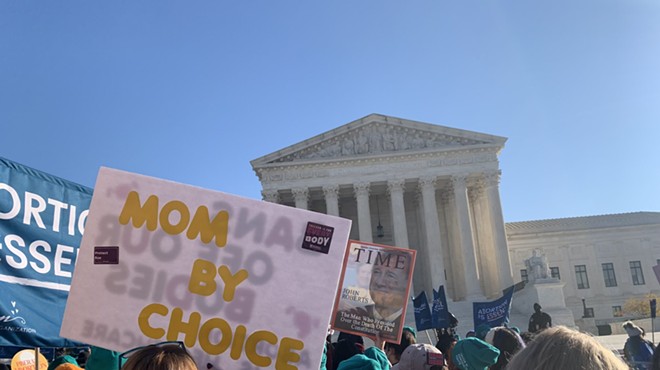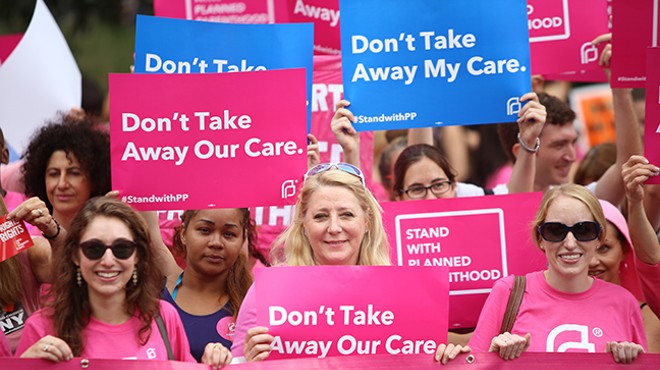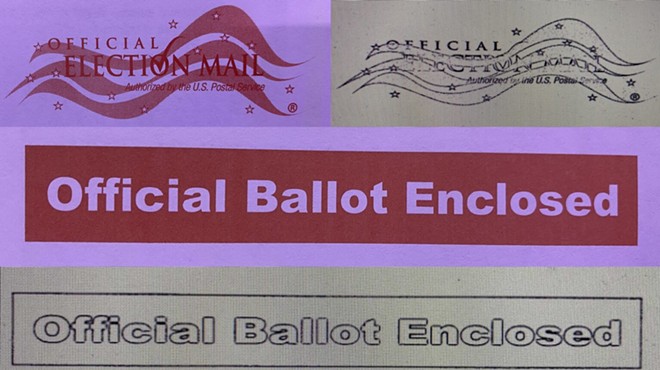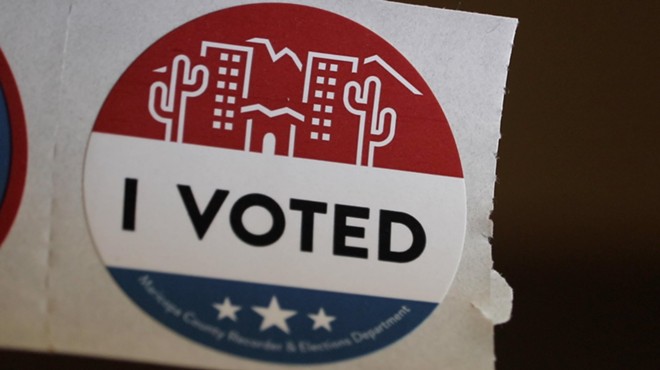Tuesday, June 28, 2016
Winners and Losers in the Classrooms First Initiative Council Proposals
When you're shifting funds around in a revenue-neutral situation, you're going to create winners and losers. It's a zero sum game, so when one party gets a dollar more, another party gets a dollar less. The most important question when you discuss those kinds of funding shifts—really, the only important question—is, who are the winners and who are the losers?
That's the situation we're facing with Ducey's Classrooms First Initiatives Council which I wrote about last week. Ducey has tasked the council with coming up with a new formula for spending the state's K-12 education dollars without adding a penny to the overall budget. During its public meetings, it has listened to lots of arguments and proposals from actors on all sides of the education debate, but when it all comes down to dust, the arguments and proposals mean little. All that matters are the recommendations the council sends on to the governor. And it's not the fine, fancy logic and language the proposals are couched in that's important. It's who wins and who loses.
I want to try to inexpertly pick apart some of the possible proposals the council will put forward to see how they shift the flow of money. I say "inexpertly" because the proposals are general, without specific details, and the devil is always in the details, and also because I don't claim to know all the complexities of our very complex system of education funding. So consider this the beginning of a conversation we need to have before, not after, the council's proposals make it to the governor's desk and he sends them on to the legislature.
The buzz word at the most recent council meeting was "equity," and as is true with most buzz words, it's best to ignore it when you're trying to figure out what's going on. Basically, "equity" means being fair and even-handed. In education, that means giving every student as close to an equal chance of getting a quality education as possible, even if it costs more to educate some students than others. That's a great idea which most people talking about education say they agree with. But when everyone uses the same term, no matter what side of the debate they're on, the term is rendered meaningless. It's like "freedom." Everyone is for it, but it takes on different meanings depending on who's talking about it.
So let's look at some of the more prominent ideas in front of the council and try to figure out what they mean in terms of who gets more money and who gets less. The rest of this post gets pretty deep in the weeds, so here's the short version for those who want to leave early. The way I read the proposals, charter schools will be the winners, along with school districts with high income students. Districts with low income students will be the losers.
The biggest change in school funding would come from the proposal to make the property tax rates for education more-or-less equal across the state. That would mean minimizing or eliminating property taxes for school bonds, school overrides and desegregation funding since those are spent by certain districts and not others. For taxpayers, the winners would be those whose property taxes include bonds, overrides and deseg funds, and the losers would be taxpayers in other districts who would have to pay more to keep the state's school funding constant. But that doesn't answer the question, which schools and students will win and lose?
There's one clear winner in this property tax proposal: charter schools. While any school district can try to boost its funding through bonds and overrides and some districts get extra money through deseg—18 Arizona districts receive deseg funding, including TUSD—charters don't have access to those funding opportunities. If all those extra funds are pooled together and doled out to all state schools, charters will see a funding boost. It's a definite win for the charter school/privatization folks.
When it comes to winners and losers among school districts, things get more complex. Districts that currently get extra money from bonds, overrides and deseg funding would see their budgets drop, and the rest of the districts would get more. However, it's difficult to neatly categorize the district winners and losers by type. I don't have the data in hand, but my guess is that wealthier school districts are more likely to pass bonds and overrides than poorer districts, which would mean the change would have a larger impact on higher income districts. But the 18 districts that get deseg funds are in low income areas, and every one of them would take a major hit. The winners and losers in this category would be a mixed bag.
Some proposals presented to the council suggested that the new formula should include extra funding for low income students, which would ease the loss the deseg districts would experience and give a boost to other districts with large low income populations. However, I'm betting that suggestion is dead on arrival.
One proposal which is sure to make it to Ducey's desk in one form or another is performance-based funding. No matter how it's sold, it will mostly benefit students in high income schools. The idea is presented as a way to promote excellence by rewarding schools for their achievement. That means schools which get A and B grades from the state receive extra money, and that favors schools in high income areas. Almost every school in high rent areas is an A or B school, not because the schools or the teachers are better, but because, as studies have shown everywhere around the world, educational achievement is directly related to student income. Districts with students high up on the socioeconomic scale will be rewarded simply because those are the students who walk through the schoolhouse doors.
To try and make performance-based funding look less biased, its proponents say that high achieving, low income schools will get a bigger financial boost than high income schools, and even if schools don't make it into the A and B category, they'll be rewarded from academic improvement. That means some schools in low income areas will get a financial boost, but most of them won't see a penny from the performance-based approach. Actually, since this is a zero sum game, schools that don't qualify for the extra funding—schools that need more money for the extra staff and resources to help their students succeed—will see some of their funding drained away and used to educate wealthier students.
Another idea that is likely to be among the council's proposals is one being promoted by national conservative education groups and has been given the label, "backpack funding." The idea is, all the funding due to students should follow them to whatever schools they attend. While the idea sounds logical and "equitable" on the surface, the result will be more money migrating to higher income schools. Right now, extra money that goes to students with learning disabilities, special education students and, I believe, ELL students, follows them from school to school. But other funds directed at low income districts, like Title 1 funding, stay at schools with a high percentage of low income students. If that were to change, if every student carried their funding with them, the result would be less money for schools with large percentages of low income students to create programs geared to their educational needs and more for schools with fewer low income students.
When I put together a post, I'm usually fairly comfortable that I have all my facts straight and my conclusions make sense (to me, at least), but as I said earlier, this time, I'm less sure. My purpose here is to get a discussion going about how our very limited education funding will be shifted if Ducey and his Classrooms First Initiatives Council get their way, so people can respond intelligently and accurately before it's a done deal. Everything here is subject to change as I learn more and as the situation changes.
That's the situation we're facing with Ducey's Classrooms First Initiatives Council which I wrote about last week. Ducey has tasked the council with coming up with a new formula for spending the state's K-12 education dollars without adding a penny to the overall budget. During its public meetings, it has listened to lots of arguments and proposals from actors on all sides of the education debate, but when it all comes down to dust, the arguments and proposals mean little. All that matters are the recommendations the council sends on to the governor. And it's not the fine, fancy logic and language the proposals are couched in that's important. It's who wins and who loses.
I want to try to inexpertly pick apart some of the possible proposals the council will put forward to see how they shift the flow of money. I say "inexpertly" because the proposals are general, without specific details, and the devil is always in the details, and also because I don't claim to know all the complexities of our very complex system of education funding. So consider this the beginning of a conversation we need to have before, not after, the council's proposals make it to the governor's desk and he sends them on to the legislature.
The buzz word at the most recent council meeting was "equity," and as is true with most buzz words, it's best to ignore it when you're trying to figure out what's going on. Basically, "equity" means being fair and even-handed. In education, that means giving every student as close to an equal chance of getting a quality education as possible, even if it costs more to educate some students than others. That's a great idea which most people talking about education say they agree with. But when everyone uses the same term, no matter what side of the debate they're on, the term is rendered meaningless. It's like "freedom." Everyone is for it, but it takes on different meanings depending on who's talking about it.
So let's look at some of the more prominent ideas in front of the council and try to figure out what they mean in terms of who gets more money and who gets less. The rest of this post gets pretty deep in the weeds, so here's the short version for those who want to leave early. The way I read the proposals, charter schools will be the winners, along with school districts with high income students. Districts with low income students will be the losers.
The biggest change in school funding would come from the proposal to make the property tax rates for education more-or-less equal across the state. That would mean minimizing or eliminating property taxes for school bonds, school overrides and desegregation funding since those are spent by certain districts and not others. For taxpayers, the winners would be those whose property taxes include bonds, overrides and deseg funds, and the losers would be taxpayers in other districts who would have to pay more to keep the state's school funding constant. But that doesn't answer the question, which schools and students will win and lose?
There's one clear winner in this property tax proposal: charter schools. While any school district can try to boost its funding through bonds and overrides and some districts get extra money through deseg—18 Arizona districts receive deseg funding, including TUSD—charters don't have access to those funding opportunities. If all those extra funds are pooled together and doled out to all state schools, charters will see a funding boost. It's a definite win for the charter school/privatization folks.
When it comes to winners and losers among school districts, things get more complex. Districts that currently get extra money from bonds, overrides and deseg funding would see their budgets drop, and the rest of the districts would get more. However, it's difficult to neatly categorize the district winners and losers by type. I don't have the data in hand, but my guess is that wealthier school districts are more likely to pass bonds and overrides than poorer districts, which would mean the change would have a larger impact on higher income districts. But the 18 districts that get deseg funds are in low income areas, and every one of them would take a major hit. The winners and losers in this category would be a mixed bag.
Some proposals presented to the council suggested that the new formula should include extra funding for low income students, which would ease the loss the deseg districts would experience and give a boost to other districts with large low income populations. However, I'm betting that suggestion is dead on arrival.
One proposal which is sure to make it to Ducey's desk in one form or another is performance-based funding. No matter how it's sold, it will mostly benefit students in high income schools. The idea is presented as a way to promote excellence by rewarding schools for their achievement. That means schools which get A and B grades from the state receive extra money, and that favors schools in high income areas. Almost every school in high rent areas is an A or B school, not because the schools or the teachers are better, but because, as studies have shown everywhere around the world, educational achievement is directly related to student income. Districts with students high up on the socioeconomic scale will be rewarded simply because those are the students who walk through the schoolhouse doors.
To try and make performance-based funding look less biased, its proponents say that high achieving, low income schools will get a bigger financial boost than high income schools, and even if schools don't make it into the A and B category, they'll be rewarded from academic improvement. That means some schools in low income areas will get a financial boost, but most of them won't see a penny from the performance-based approach. Actually, since this is a zero sum game, schools that don't qualify for the extra funding—schools that need more money for the extra staff and resources to help their students succeed—will see some of their funding drained away and used to educate wealthier students.
Another idea that is likely to be among the council's proposals is one being promoted by national conservative education groups and has been given the label, "backpack funding." The idea is, all the funding due to students should follow them to whatever schools they attend. While the idea sounds logical and "equitable" on the surface, the result will be more money migrating to higher income schools. Right now, extra money that goes to students with learning disabilities, special education students and, I believe, ELL students, follows them from school to school. But other funds directed at low income districts, like Title 1 funding, stay at schools with a high percentage of low income students. If that were to change, if every student carried their funding with them, the result would be less money for schools with large percentages of low income students to create programs geared to their educational needs and more for schools with fewer low income students.
When I put together a post, I'm usually fairly comfortable that I have all my facts straight and my conclusions make sense (to me, at least), but as I said earlier, this time, I'm less sure. My purpose here is to get a discussion going about how our very limited education funding will be shifted if Ducey and his Classrooms First Initiatives Council get their way, so people can respond intelligently and accurately before it's a done deal. Everything here is subject to change as I learn more and as the situation changes.
Tags: Classrooms First Initiatives Council , Doug Ducey , Funding equity , Performance-based funding , Backpack funding














